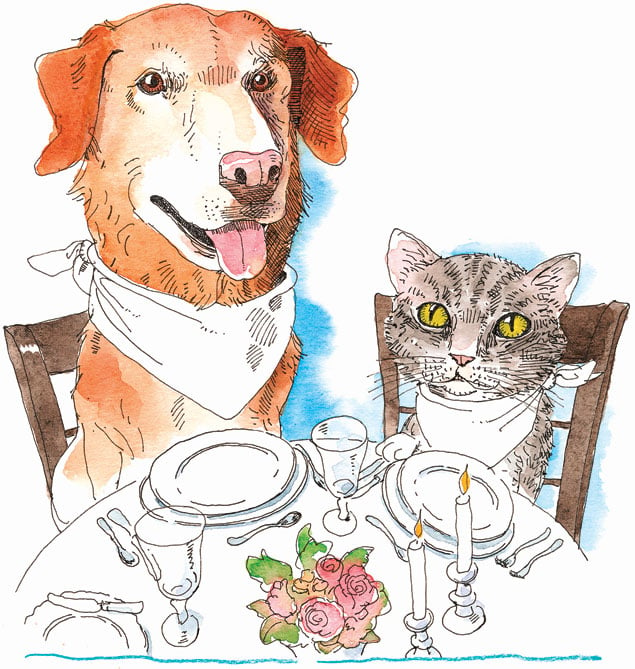Kelly Parker says it’s her job as a “responsible parent” to research what she feeds her dogs. “You wouldn’t feed your kids McDonald’s every day, would you?” says the obstetrician/gynecologist resident who lives in Silver Spring. “So why would you feed the equivalent to your dog?”
When they were puppies, Parker fed her border collie, border-collie mix, and pit-bull mix Hill’s Science Diet, which cost about $40 for a bag that lasted two weeks. After researching fillers and additives, she switched them to a diet free of corn, soy, and animal byproducts. She now feeds them Natural Balance, which doesn’t contain those ingredients and is $55 to $60 for a three-week supply.
Parker isn’t alone in seeking healthier options for her pets. As natural and organic foods have become popular for humans, the trend has spread to the pet industry. But veterinarians say that labels such as “natural,” “holistic,” and “organic” don’t always come with real benefits, and the terminology can be misleading.
The Association of American Feed Control Officials—a group of local, state, and federal agencies that regulate the sale and distribution of animal feeds—establishes the nutritional standards for pet food. But it’s up to each company to make sure products comply with AAFCO standards, because the agency doesn’t test or certify them. There are no pet-industry rules about labeling organic foods; according to the AAFCO, “natural” simply means that a product can’t be made synthetically, and “holistic” isn’t defined at all.
Heidi Allen, a veterinarian with the Hope Center for Advanced Veterinary Medicine in Vienna, says owners too often assume that those labels mean a product is healthy. In reality, she says, some diets can have serious consequences. Take the raw-food movement, which claims that non-processed pet foods lead to increased energy, healthier coats and teeth, and better dispositions. The idea behind it is to simulate the raw diet of wild animals.
Allen points out that wild animals eat their prey immediately, not after it’s been frozen or freeze-dried: “Neither method really kills bacteria. Mostly, they halt the growth of bacteria for the time being, but the bacteria are well preserved. The diet has become extremely popular, and I fear it is going to be a real problem.”
Liam Lally, manager of the Pro Feed pet store in Alexandria, feeds his cat freeze-dried raw food and says the animal’s coat is so shiny he can practically see his reflection in it. He stands by the diet: “It is what’s best for their systems naturally.”
Ashley Hughes, a veterinarian at Friendship Hospital for Animals in Northwest DC, feeds her own dogs a mix of big-name foods as well as products made by smaller companies targeted at health-conscious owners. Her favorite brands are Hill’s Science Diet—one of the most popular foods on the market—and products from a little-known company, Annamaet, which advertises its foods as holistic and natural.
For Hughes, finding the right food means doing research to make sure companies can back up claims on their packaging. “Just because something is labeled organic does not mean it is an appropriately formulated pet food,” Hughes says. Unlike many companies, she notes, Hill’s Science Diet and Annamaet both employ veterinary nutritionists who oversee what goes into their products.
Though taking the time to research your pet’s food may seem like a chore, Kelly Parker considers the extra work and expense to be worthwhile. She has seen improvements in their coats, weight, allergies, and digestive health.
Says Parker: “Most pet owners I know would do anything to buy more time with their animals.”
Laura Wainman is a former editorial intern and lover of all four-legged pets, including her own dog.
This article appears in the June 2012 issue of The Washingtonian.



















